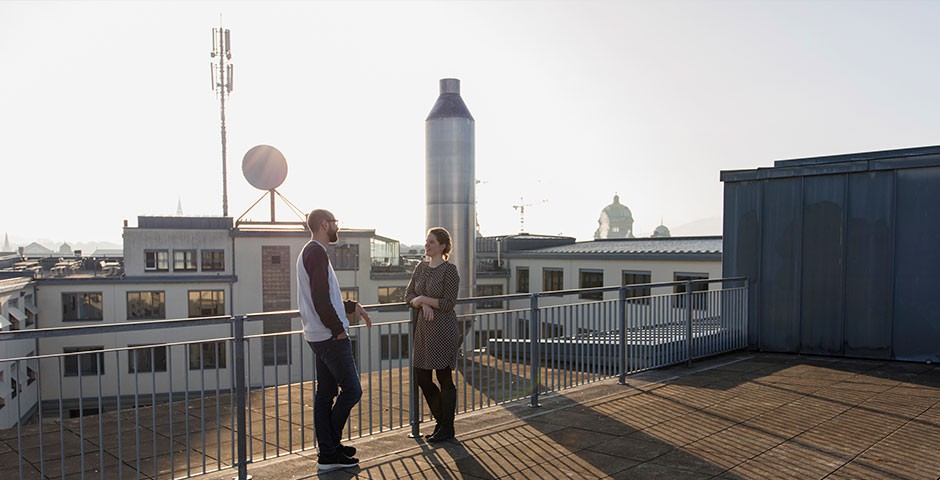
Usage of the mobile phone network is mushrooming – but nobody welcomes the infrastructure required to support this. As soon as the construction of a new mast is announced in the local area, the objections start. In many places, opponents launch petitions against planned mast building projects. And they often distribute flyers that include a mobile number as the contact – an almost symbolic contradiction.
If improved coverage in the area is resisted, local mobile phones automatically have to use a more distant antenna with poorer reception. This results not in less radiation for your body, but more – unless you completely avoid having a mobile of your own and also distance yourself from mobiles carried by other people. The frequently heard call for mobile phone masts to be banned from residential areas is therefore something of an own goal. While the mast may have been banished from sight, the result is even greater radiation.
This is because poor reception causes an effect that we know from our personal conversations: if two people who are sitting a long way from one another want to talk, they both have to shout in order to be heard. In mobile telecommunications, this means that the antenna and mobile phone need to output more power in order to maintain a connection with one another. In the case of the mobile phone, the transmission power may be up to a thousand times higher – and, moreover, in the immediate vicinity of the body.
More is less
Any tightening of the limits, usually part and parcel of the demand to decouple indoor and outdoor coverage, also results in a similar effect. After all, there are simply no devices that have been designed for this unique, Swiss way of doing things. All parts of the mobile telecommunications system are designed according to international standards. If the limits were now to be reduced even further so that signals are no longer able to reach inside buildings, this would, in turn, increase the radiation from one’s own mobile, which has to compensate for the poor reception with a significantly higher transmission signal. Or – to return to the example of the two people talking – the quieter it is outside, the louder it becomes inside.
Even the adaptive antennas that are often criticised by opponents are unjustly pilloried within these groups. These, too, reduce radiation exposure because they are able to target the signal more directly towards the devices. Or, in other words, they don’t ‘shout’ at an entire sector in order to be heard by a single mobile phone, but instead speak precisely to the place where the active device is located. The is because an adaptive antenna first registers the direction in which a mobile phone is located, targets it as directly as possible and can therefore address it as accurately as possible but with only as much power as is necessary The network thus avoids unnecessary radiation for everyone who is not using their own mobile at that particular moment.
Adaptive antenna systems actually represent a more efficient technology that does exactly what the anti-radiation lobby has always wanted: it only transmit signals where and when needed, and protects non-users.
Displacement effects
The greatest misconception, however, mainly concerns the origin of radiation. In mobile telecommunications, mobile phones and other devices carried on the body, such as networked watches, trackers or third-party devices cause around 90 percent of daily exposure. This figure is as high as 95 percent in the area of the head. With every centimetre in distance from the body, the intensity decreases quickly. A mobile communication mast only accounts for an average of between one twentieth and one tenth. Moreover, Switzerland has extremely strict limits, so that the values actually measured are still far below the possible values. Masts and antennas are often demonised, the mobile phone revered – but in order for the communication to function, all components have to be able to interact properly.
In summary: good network coverage ensures that network and devices can communicate with one another as efficiently as possible. That is, with no more radiation than is really necessary. And that is precisely what 5G technology, quite in contrast to its predecessors, can do better. But for this to happen, the antenna also has to be located where it is used, and adaptive antenna systems are required for this. Further distancing antennas and phone masts from the users, delaying expansion or imposing even stricter limits will ultimately lead to more radiation for the user, unless we dispense completely with using mobile phones and keep away from devices carried by others.
As a precautionary measure, the following tips can help reduce the impact of mobile phone use and WLAN on the body.
- Wear a headset when making phone calls. Every additional centimetre away from the end device reduces radiation exposure significantly.
- Select a mobile phone with a low SAR (maximum radiation) limit.
- Do not use ‘radiation blockers’. These often have the opposite effect, causing devices to emit much more radiation.
- To limit electromagnetic radiation at home as a precautionary measure, do not forget the other sources of low frequencies, such as alarm clocks, household appliances, lamps, irons and electric radiators or infra-red heaters.
- Make sure you have good reception. The better the reception, the lower the exposure. The closer the antenna, the less radiation emitted by the mobile phone.
- On the Swisscom Home app, set the WLAN to turn off at night – this also saves energy. The strength of the WLAN signal can also be adjusted to the size of the apartment.
Latest news about Swisscom
Subscribe to News
Contact us
Address
Swisscom
Media Relations
Alte Tiefenaustrasse 6
3048 Worblaufen
Postal address:
Postfach, CH-3050 Bern
Switzerland
Contact
Tel. +41 58 221 98 04
media@swisscom.com
